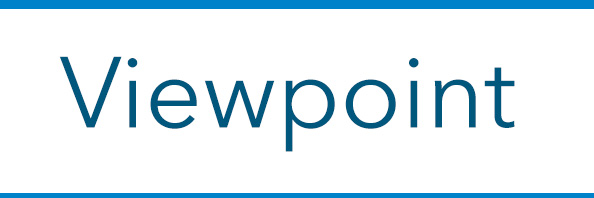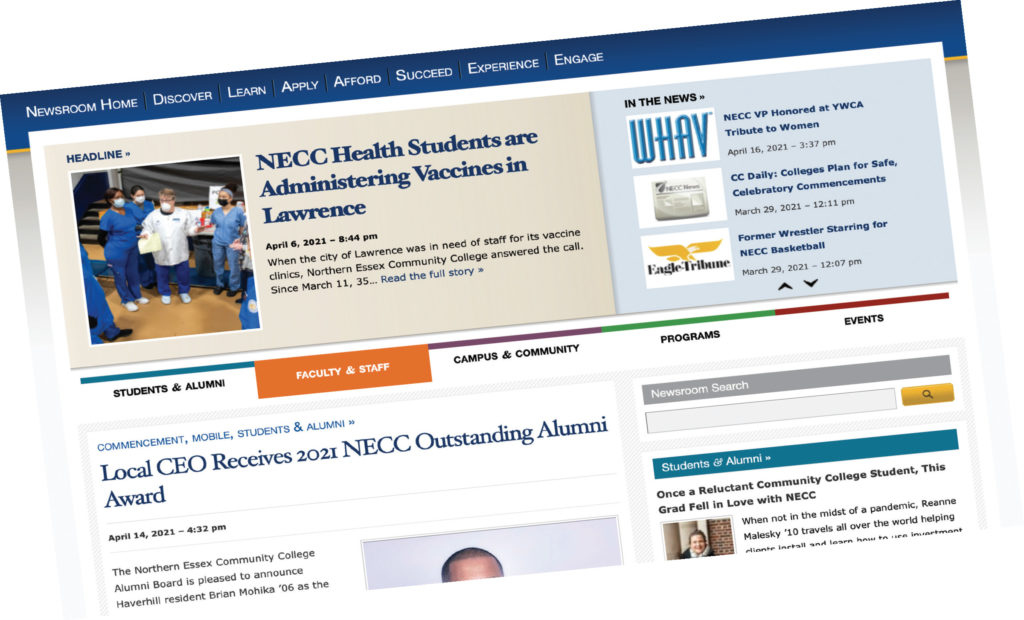Soon after Northern Essex Community College’s (NECC) longtime local newspaper announced another round of cost-saving measures, a veteran reporter was asked how he was coping. He sighed and said staff members were doing the best they could but no longer had the resources to cover important stories.

He shared there had been a recent town meeting when a critical vote was taken. The reporter was unable to find the time to request a transcript of the meeting and cover the story, but a citizen journalist had stepped in, offering a full report on the community’s Facebook page.
“They’re doing our job,” the reporter said.
This article is part of a monthly series provided by the National Council for Marketing & Public Relations, an affiliated council of the American Association of Community Colleges.
It’s a common story. What’s happening to local newsrooms is deeply concerning on many levels. One of those concerns is a practical one: It’s increasingly difficult to secure media coverage. NECC, in Massachusetts, used to count on its daily newspaper to feature front-page stories about the college regularly, but with fewer reporters and a shrinking news hole, those have all but dried up.
Yes, media relations is still important, but recognizing the challenges of the current media landscape makes it imperative for public relations professionals to expand their outreach and find new ways to spread the community college story.
Have a robust newsroom is key
An online newsroom that gets updated regularly is an important first step.
Northern Essex created its newsroom 11 years ago. It serves as the hub for college news and is organized by subject category. It includes recent news coverage, contact information and a search tool.
The newsroom is typically updated three times a week with stories about programs, students, alumni, trends and upcoming events. Its content ties into the college’s priorities and is shared as widely as possible: with the media, on social media, in NECC’s e-newsletter, in digital marketing and on the website.
A monthly Google Analytics report tracks statistics, including:
- Visitors to the newsroom (typically 5,000 a month)
- Percentage of new visitors (approximately half)
- Most popular content, which drives future content decisions
- Where traffic is coming from. Google Search is on top, followed by social media.
Expand social media presence
The college’s social media coordinator shares newsroom posts and media coverage on appropriate social media channels – including Facebook, Instagram, Twitter and LinkedIn – and carefully monitors engagement.
One strategy that worked well for NECC is sharing college news on community Facebook pages, which have become an important source for local news.
For example, a recent story featured two 2020 high school graduates with plans to attend a four-year college in the fall. Instead, they enrolled at Northern Essex because of the pandemic. The college shared the story on a community Facebook page, and the post garnered 107 likes or loves and 29 positive comments from alumni and parents who were proud of the graduates’ decision to start at Northern Essex. One comment read, “Excellent approach – great education and tremendous cost savings! I completed an A.S. at NECC and then transferred for a B.S. at Salem State. Zero student loans and great experience. Loved both schools!”
The opportunity to have community members share their positive college experiences is priceless. This strategy has worked especially well with student and alumni success stories.
Create an e-newsletter
Northern Essex has a bimonthly e-newsletter called NECC Now, with content pulled directly from the newsroom. When the college started NECC Now four years ago, one newsletter existed for three groups of audiences: students, faculty and staff, and external stakeholders.
Two years ago, as part of an effort to increase open and click rates, the college segmented NECC Now, offering customized content for each of the three audiences. For example, a recent issue’s lead story for students was the announcement of a laptop fund. But for external stakeholders and faculty and staff, the lead story covered the growth in NECC’s Early College program.

Segmentation has made NECC Now more effective, and the college reached its goals of increased open and click rates. The faculty and staff newsletter, for example, has a 50% open and click rate. Thanks to Constant Contact analytics, the college can track exactly what content is resonating with key audiences such as legislators and board members.
Further segmenting newsletters can make them even more relevant, says Stephen Dupont, vice president of public relations and branded content at Pocket Hercules, a Minneapolis-based advertising agency and public relations firm.
“If you have a population of students who are 22-years or older, maybe consider an email for them versus lumping them into the same e-newsletter that students right out of high school get,” he says.
That’s definitely a goal Northern Essex continues to take seriously.
Tap into local news blogs
Online news outlets are attempting to fill the void left by the loss of local newspapers and local journalists, according to a 2020 report from the University of North Carolina Hussman School of Journalism and Media. Local news blogs offer another opportunity to share college news.
Tim Coco, a Northern Essex grad and veteran journalist, has a nonprofit local news service in Haverhill, Massachusetts, where Northern Essex has a campus. The service, which includes a daily news blog and a radio station (WHAV), is supported by members and sponsors – including Northern Essex. The college works closely with the station to share the college’s headlines. Merrimack Valley Magazine – which covers Massachusetts’ Merrimack Valley, home to Northern Essex – has announced it will launch a daily news source later this year, an addition to the magazine’s current Wednesday Wellness and Sunday’s Noteworthy e-newsletters.
These local news services are looking for news that is targeted toward a geographic area or a specific area of interest such as health or food. Community colleges’ media lists should include similar local news blogs in addition to traditional news outlets.
What’s next
These are just a few examples of how Northern Essex has decreased its dependence on media coverage by delivering its news directly to key audiences, including faculty and staff, students and prospective students, and external stakeholders.
The good news is that it’s working.





